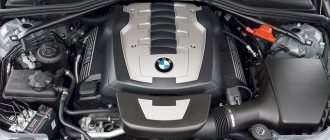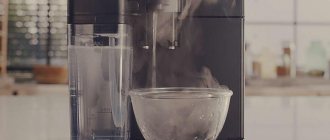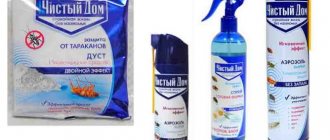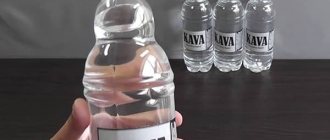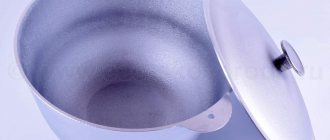2 Cryogenic blasting - advantages and disadvantages of the method
By the way, this cleaning method was first tested in the West about 20 years ago. The obvious advantages of blasting contribute to the increasing spread of the cleaning method both in the industrial sector and in the service sector, for example, in car washes and service stations. So, the advantages of cryoblasting:
It is not surprising that today this type of cleaning can be found in almost any industry. In the food industry it is used for washing equipment, in the production of metal structures it is used to effectively clean welding seams and prepare the surface for painting, in the foundry industry it is used to clean the mold from characteristic contaminants. In the energy sector, blasting allows you to clean equipment even without turning off the power supply, when it is so important not to stop the supply of electricity.
Dry ice will cope with oil and grease stains, stains of tar and tar, traces of lubricants, soot and carbon deposits.
After cleaning, the surface is completely degreased, so it can be immediately coated with layers of anti-corrosion protection or painted. Sea mollusks, mucus and algae will not withstand extreme temperatures and pressure.
Are there any disadvantages to this cleaning method? Perhaps the most important drawback is the lack of constant ability to use it if you have not purchased the necessary equipment. Water and a rag are always at hand, and household chemicals have long become an integral part of life. In addition, it is not always possible to do without disassembling the equipment into individual parts to make them easier to clean. And for your safety, we still recommend that you unplug the item being cleaned from the mains when washing - the granules themselves do not conduct electricity, but many elements besides them are capable of this.
When is the procedure needed?
When operating a machine, the engine becomes exhausted due to various circumstances. This could be unexpected penetration of liquids into the engine compartment, oil leakage, or dust deposits. Contamination can cause rapid overheating of the engine, prevent timely recognition of problems, give the car an unaesthetic appearance, and the presence of oil stains on the engine can lead to fire.
As a rule, the engine is cleaned using various specialized washing liquids or steam. Modern cars are equipped with electronics, so these types of cleaning can harm the car. If drops of water get in contact, the contacts may oxidize and stop working, even causing a short circuit in the wiring. For this reason, if the need arises to clean the engine, it is better to seek the help of specialists in this field.
What is cryoblasting and how is it done?
Today, the cryoblasting method using carbon dioxide (dry ice) is considered one of the most advanced for cleaning contaminated surfaces. The use of such a paradoxical and unique substance is similar to the technique of sandblasting materials.
Where is it used?
The scope of application is expanding every day - it is truly limitless. The field of cryoblasting continues to develop, so there are no definitive indicators yet.
- Railway, aviation, automobile industries. It is used in cleaning a variety of mechanisms - painting units, conveyor lines, generators and engines, numerous lifting and loading units and much more.
- Metal industry. In the foundry industry, carbon dioxide is increasingly being used, since it efficiently and quickly cleans surfaces covered with metal splashes, without leaving any waste.
- Food industry. The method is indispensable in the process of cleaning ovens, smokehouses, conveyor lines, and baking molds from fat deposits. Does not damage metal and plastic. At the same time, ultra-low temperatures destroy mold and pathogens.
- Tire production. Cryoblasting destroys the remains of rubber and reagents, ridding the environment of the pungent odor of recycled, burnt rubber.
- Typography. Using carbon dioxide, high-precision printing equipment is carefully cleaned of paints and varnishes. The method allows you to put in order copying units and toners that require delicate handling.
- Energy and nuclear power. Transformers are cleaned with carbon dioxide, reactors are disinfected, and turbines are put in order.
Cryogenic blasting is being mastered by advanced cleaning agencies everywhere. They use it in cleaning medical offices, children's, shopping, entertainment, sports centers, administrative premises, industrial workshops, external and internal spaces of buildings.
What it is?
The method of cleaning the base using granulated carbon dioxide from any, even the most difficult to wash off, pollutants is called cryogenic blasting. The process requires a working pressure of 6-17 bar. The values depend on the equipment being cleaned.
A big advantage of cryoblasting, in addition to many others, is its non-waste nature - particles of carbon dioxide disappear without a trace.
There are many advantages to this type of treatment; we will list the most obvious ones.
High efficiency – cryoblasting copes with the most persistent and complex stains.
The degree of cleaning tends to 90% - dry ice granules are able to penetrate into the most inaccessible places that brushes cannot handle.
Disinfection – ultra-low temperatures have an excellent disinfecting effect. Most pathogens are destroyed.
Delicacy - the absence of abrasive leaves the surface undamaged.
Time saving - when using the cryoblasting method, complex structures do not have to be disassembled into components. The pervasive ability of carbon dioxide vapor allows you to clean equipment of any geometry.
The method is applicable to bases made of any type of material.
High cleaning speed - treatment of contaminated surfaces occurs much faster than any other mechanical or chemical method. The whole process takes place in one step.
Environmental friendliness - 100% evaporation of dry ice eliminates subsequent stages of cleaning the premises.
Profitability – funds invested in the purchase of equipment pay for themselves many times over. Such opportunities can be used as cleaning services at a very competitive price.
Ready – the equipment does not require additional configuration. It is completely ready for use immediately after purchase. It's just a matter of dry ice.
Surface cleaning can be carried out without stopping production, so time costs are reduced to a minimum.
Dry Ice Cleaning
The technology is an innovative cleaning method without damaging the surface. The principle is to jet dry ice granules under high pressure. Dry ice is the solid form of carbon dioxide CO2. The granules fly out of the nozzle at high speed and hit the surface, knocking down contaminants.
Description of the technology and its areas of application
Dry ice is a solid state of aggregation of carbon dioxide. CO2 is a colorless, tasteless and odorless gas also found in the atmosphere. The temperature of the solid form is -78.33 °C.
Dry ice is a universal substance, non-toxic, non-flammable, and does not conduct electricity. The peculiarity of this substance is that it passes from a solid state to a gaseous state, bypassing the liquid state of aggregation. This process is called sublimation. Dry ice is produced from liquid carbon dioxide by pressing it at high pressure (about 300 atm.).
Dry ice characteristics:
- White color;
- Temperature -78°C;
- Density 1.6 kg/liter;
- Granule size from 1.7 mm to 18 mm;
- The mass of the block during manufacture is 35 kilograms;
- Non-toxic and non-explosive, making it environmentally beneficial;
- Complies with the standards of GOST 12162-77.
The dry ice cleaning process occurs at an outlet pressure of 7 to 14 bar. Due to the pressure of compressed air, the granules are accelerated to speeds close to the speed of sound. Now in most cases, standard main line pressure in the range of 2.0-6.9 bar is used for cleaning. The cleaning process itself involves moving contaminants from the surface. The flow of granules hitting the surface at high speed has a great mechanical impact. In this case, dry ice particles, falling on a surface having a temperature higher than the temperature of the state of aggregation of dry ice, begin to sublimate. Therefore, the dry ice granules expand. With an expansion of 700 times, dry ice particles have a strong cleaning ability. All dirt moves from the workpiece to a place where it can be easily collected. If the dirt is hard, it ends up on the floor, where it can be collected with a regular vacuum cleaner. If the surface is to be cleaned of a wet substance such as grease, then a technology similar to hose jetting should be used. Starting to clean the product from one end, we move the substance or lubricant to the other end, from where it can be easily removed using a rubber scraper. If fragile contaminants, such as paint, need to be cleaned, then the cleaning process creates a wave of compressive stress between the substrate and the coating. Then the wave has sufficient energy to overcome adhesion and literally tear the coating off the surface being treated. If you need to remove a viscous or plastic coating from the surface, for example oil, paraffin, then a process similar to hydroblasting should be carried out. Upon impact, the granules explode, creating a high-speed stream of snow that washes away, like a stream of water, dirt and deposits from the treated surface.
Schematically, the cleaning process looks like this:
Dry ice cleaning technology has found wide application in industrial cleaning of industrial and power equipment, metal structures, wood, and stone from a wide range of contaminants. Cleaning using cryogenic blasting is used in almost all areas of the economy:
- Energy;
- Aviation;
- Shipbuilding;
- Mechanical engineering;
- Metallurgy;
- Food industry;
- Instrumentation;
- Construction and operation of buildings and structures.
Characteristics of the cleaned surface
Dry ice is a natural cleaning agent with antibacterial properties. The low temperature immediately kills harmful fungi and bacteria upon contact. Cleaning with dry ice disinfects and eliminates the need for chemical disinfectants. After cleaning with dry ice, the surface remains grease-free and dry. Blasting also prevents the appearance and growth of mold and bacteria on the surface.
Necessary raw materials, materials and equipment
For effective cleaning with dry ice, a set of equipment is required consisting of a container for storing granules, the blaster installation itself, and a compressor for supplying compressed air. A container for storing dry ice granules is needed to preserve the particles for a longer period. At the same time, Dry ice can be produced yourself using a granulator, or purchased from a manufacturer. The main thing is that the size of the granules is from 0.5-3 mm.
Comparison of cost-effectiveness with abrasive cleaning
Dry ice cleaning technology allows work to be carried out without interrupting production processes, i.e. reduces equipment downtime to a minimum, thereby helping to reduce costs and increase profits.
Thanks to the high quality of the cleaning process and reduced equipment downtime, no dismantling, equipment maintenance costs are reduced to a minimum, and there is no need to use chemical products and solvents. All this allows you to reduce the payback period of investments.
When compared with abrasive cleaning, there are both pros and cons. The advantages include that dry ice does not damage the surface and after cleaning only dirt remains, while after abrasive processing, the abrasive material itself remains. Which must also be disposed of. The abrasive material itself is of course cheaper than dry ice and easier to obtain. But this requires dismantling and subsequent surface treatment, which entails additional costs. Although the efficiency and speed of cleaning with dry ice is superior to abrasive cleaning.
The next page provides an example of calculating the costs associated with different cleaning technologies. All relevant parameters such as blasting time, abrasive consumption, labor costs, etc. are adjustable.
In the example below, the calculation is made using a special waste rate of 30%. Up to 80% of waste water can be reused.
Cost comparison
Capacity by area - 10,000 m3
Percentage of hazardous waste to normal waste - 30%
Water purification/reuse rate - 80%
Dry Ice Cleaning Equipment
Dry ice cleaning equipment
| Model | Loading dry ice | Power consumption | Air pressure |
| Karcher IB 7/40 Classic | 15 kg | 0.6 kW | 2-10 bar |
| Karcher IB 7/40 Advanced | 15 kg | 0.6 kW | 2-10 bar |
| Karcher IB 15/120 | 40 kg | 0.6 kW | 2-16 bar |
Dry ice generators
| Model | Capacity | Power consumption |
| Karcher IP 55 | 55 kg/h | 1.6 kW |
| Karcher IP 120 | 120 kg/h | 4.0 kW |
| Karcher IP 220 | 220 kg/h | 5.6 kW |
Compressed air compressor
| Model | Effective working pressure | Atmospheric air supply |
| XAHS 186 | 12 bar | 175 l/s |
| XAHS 37 | 7 bar | 33 l/s |
| Mobilar M135 | 10/12/14 bar | 13.0/12.0/10.5 m3/min |
Equipment
In essence, cryoblasting is the same as sandblasting, but instead of an abrasive it uses dry ice granules. To obtain them, you need a pelletizer - a device capable of producing up to 180 kg of pellets per hour. The installation itself can be of household size, into which up to 30 kilograms of ice is loaded.
On an industrial scale, a dry ice blaster can hold up to 200 kg of granules.
Benefits for enterprises
Enterprises that have implemented cryogenic blasting technology have received a number of advantages:
- Saving working time. After all, the cryoblasting process takes much less time compared to its competitors. No additional scrubbing or scrubbing is required.
- Reduced downtime. Equipment is cleaned directly on site; there is no need to transport devices separately. Under such conditions, productivity increases several times.
- Reduction or complete absence of mechanical wear and damage during cleaning. This is due to the fact that ice granules do not harm surfaces, unlike, for example, sandblasting machines, which can knock out coating particles, which can cause the surface to become rough, which means there will be additional space for various contaminants to settle. Units kept clean last longer.
- Preventing unnecessary elements from getting inside the equipment. Since the ice granules turn into steam upon reaching the surfaces, there will be nothing stuck in the cracks and holes, which means there is no need to worry about equipment parts becoming clogged. Also, with this technology, the problem of clogging ventilation holes is eliminated.
- Reducing obligations. Cleaning chemicals that may pose a hazard to workers can be eliminated entirely. There is also no need for manual transportation of equipment, which is also included in the list of risks in production.
- Cost reduction. Cleaning with dry ice does not generate secondary waste, so there are no disposal costs. There is also no need to purchase additional solvents to eliminate them.
Cryoblasting perfectly removes not only dirt, but also corrosive deposits on metals.
With its help, they are removed easily and quickly. Surface rust can be easily removed, but it is worth knowing that ice will not be able to remove the layer of material that has converted to iron oxide. Contaminants with a loose structure come off easily, but if there is oxidation that has penetrated into the deep layers of the metal, it will not be possible to clean them. The metal will not become white and shiny - for this you need to remove the surface layer, and carbon dioxide ice is not intended for this. Its task is to remove various types of contaminants and prepare surfaces for further processing. Most often, this property is a plus, as it guarantees the absence of damage to the surface.
Technology
In the cryoblasting process, small pellets of dry ice are applied under high pressure from a blaster to the contaminated item.
In contact with the surface, the ice cools it extremely.
During contact with carbon dioxide, a microexplosion occurs.
As a result of this process, molecular particles of odor and dirt are sharply reduced in volume, breaking away from the surface.
Dry ice evaporates instantly. To remove rust, a working pressure of 6 bar is required, while for difficult areas it is 15-17 bar.
The presence of such a facility as cryoblasting is an effective optimization of work. Many companies, one way or another connected with the need to clean equipment, purchase cryoblasting units.
You can watch the video below about the use of cryogenic cleaning.
Source
Causes of engine contamination
Driving a car with an engine that has contaminated parts is a bad idea: such an engine can quickly overheat, and it is difficult to identify problems with it in a timely manner.
If layers of automobile oil act as contaminants, a fire may occur, and such an engine will look unsightly in appearance. This is why a dirty motor needs to be cleaned. There are many reasons why it gets dirty. One of the most common is accidental ingestion of any liquids. Over time, a layer of dust forms on an engine that is not cleaned for a long time, because small dust particles can penetrate everywhere.
Scope of use
Dry ice cleaning is used in many industries.
In the chemical industry, it is possible to remove residues of reagents, carbon deposits, etc. from the surfaces of installations. In the production of tires, the method will help eliminate unnecessary rubber from equipment for pressing and molding, from the mixer, and nozzles, which will extend the operation of the units. In the food industry, ice cleaning is becoming an indispensable method for removing protein residues and other substances. In addition, blasting is used in the energy sector, construction, foundry production, processing of plastic products and in other areas.
Our qualified specialists are ready to provide detailed consulting services regarding the dry ice cleaning method; for this you need to contact the company managers by phone.
Our advantages
Trained personnel permanently on staff
Availability of rich technical equipment
Warranty and post-warranty service
The largest range of services in Russia
Extensive experience working on various types of objects
